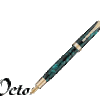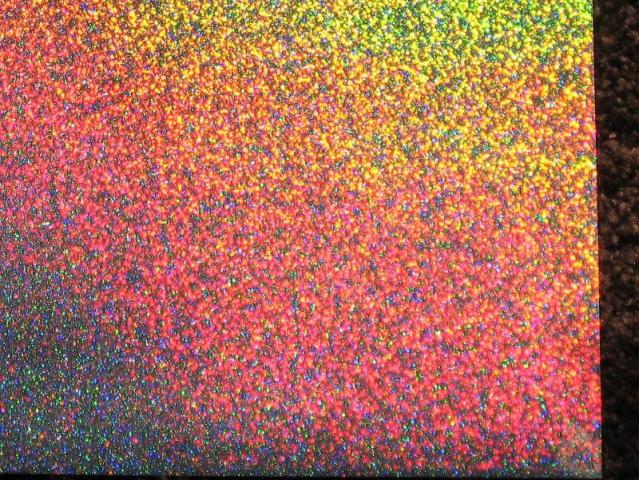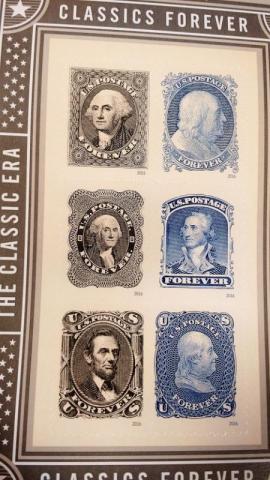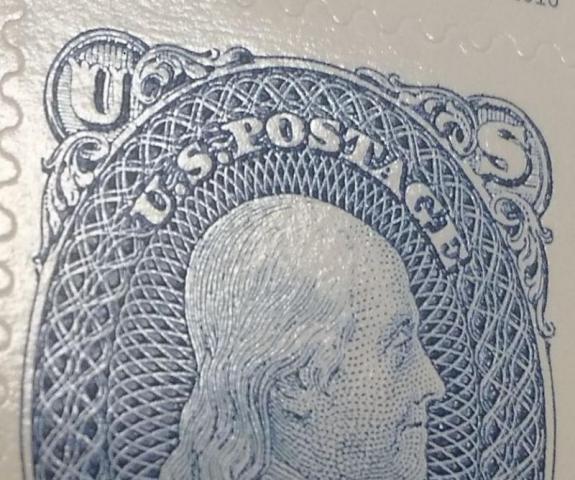Search the Community
Showing results for tags 'stationery'.
-
I recently invested in my first set of personalized stationery. Quite some time ago, I thought I ran across a guideline that if you need to use a second page when writing a letter on personalized stationery, the second page should be blank paper. Is this the case? The internet has been unhelpful in...
- 5 replies
-
- stationery
- personal letter writting
-
(and 2 more)
Tagged with:
-
From one Fountain Pen lover to others...Hello from India...
horizonmusic posted a topic in Introductions
Hello everyone, I am from India, and ever since I can recall which is my early childhood, I've loved stationery and over a period, I developed a special bond for pens, and specifically fountain pens. Some 6 years back I chanced upon Fountainpennetwork.com but however silly it may sound; the truth...- 12 replies
-
- india
- fountainpens
-
(and 2 more)
Tagged with:
-
I received an advertising email from Endless today, promoting a new product called the "Creative Block"; it's a memo pad with dot matrix and is fountain pen friendly. It looks like a good product. I am curious if others reaction to the ad is the same as mine - I feel patronized at being...
-
I am trying to find planning pads that are the notebook equivalent of an Excel spreadsheet(though I don't expect them to do calculations for me). I want horizontal orientation, in chart form, that I can use for a number of projects. It doesn't need to be wall mounted or self-propping. Something l...
- 18 replies
-
- notebooks
- stationery
-
(and 2 more)
Tagged with:
-
Accidentally found this nice store in Estes Park, CO. Coffee, Stationary, Ink and Pens. https://inkwellbrew.com/ The coffee was excellent, staff very friendly. They carried a nice selection of notebooks, journals, and assorted things, in FP friendly paper. They also had a selection...
-
In one of the world's largest cities, there always seems to be a place to take a break. At the Hakusan Shinto shrine in Tokyo. A week in Japan makes me think stationery stores are the retail urban planning equivalent of zen gardens. They provide an analog break in days filled with digital noise...
- 28 replies
-
- stationery
- japan
-
(and 5 more)
Tagged with:
-
Storing/presenting Your Common Stationery
mike.jane posted a topic in It Writes, But It Is Not A Fountain Pen ....
Good day. A quick query: I'm sure many of you enjoy having a tidy desk and also having your regular/common/(inexpensive/everyday stationery handy. Maybe you would like to share a picture of what's going on on your desk, or in your office or home. Here's mine; I have... - a glass that's just pencil... -
Having settled on 100g A3 Colotech+ Xerox paper I started by cutting it in half to make A4 sheets to write with. The next step was to fold it in half Then I started using my paper rounder - a paper punch to give a 10mm rounded corner - to round the corners of the folded A3. The final stage wa...
-
I'd like to write a letter using one of my pointed dip pens (or possibly the glass dip pen, although that's still relatively new to me), and I was wondering if anyone had suggestions on a good cream or ivory colored stationery or paper to use? In particular, I am choosing to break out a dip pen as...
- 1 reply
-
- dip pen
- pointed pen
-
(and 3 more)
Tagged with:
-
I live in the Twin Cities MN area and need to get some new envelopes. I'm currently using generic business envelopes which really suck with fountain pens at least the ones I have lol. I've had real good luck finding smaller envelopes since there seems to be more out there, however, the selection o...
-
While I appreciate the experience of writing on high quality paper, I’m not keen on paying full price for it. And since I imagine many of you feel the same, perhaps we can alert each other to any great deals and deep discounts we come across at various retailers, particularly the online ones. Do...
- 3 replies
-
- fp paper
- stationery
-
(and 5 more)
Tagged with:
-
 I've been lax in posting these reviews back to FPN. Sorry for the delay. This is Part 4 of my Mega Monster Review series on Pocket Notebooks. Here's the review for the Fabriano EcoQua pocket notebooks along with a few pictures. Below are links to the full review, the main Mega Monster page, and...
I've been lax in posting these reviews back to FPN. Sorry for the delay. This is Part 4 of my Mega Monster Review series on Pocket Notebooks. Here's the review for the Fabriano EcoQua pocket notebooks along with a few pictures. Below are links to the full review, the main Mega Monster page, and...- 6 replies
-
- paper
- stationery
-
(and 2 more)
Tagged with:
-
 This is Part 6 of my Mega Monster Review series on Pocket Notebooks. Here's the review for the Scout Books pocket notebook along with a few pictures. Below are links to the full review, the main Mega Monster page, and the master spreadsheet (still very light as I ramp up on this project). As this...
This is Part 6 of my Mega Monster Review series on Pocket Notebooks. Here's the review for the Scout Books pocket notebook along with a few pictures. Below are links to the full review, the main Mega Monster page, and the master spreadsheet (still very light as I ramp up on this project). As this...-
- stationery
- notebooks
-
(and 2 more)
Tagged with:
-
 Catching up...This is Part 5 of my Mega Monster Review series on Pocket Notebooks. Here's the review for the Kokuyo A6 Systemic Refill notebook along with a few pictures. Below are links to the full review, the main Mega Monster page, and the master spreadsheet (still very light as I ramp up on th...
Catching up...This is Part 5 of my Mega Monster Review series on Pocket Notebooks. Here's the review for the Kokuyo A6 Systemic Refill notebook along with a few pictures. Below are links to the full review, the main Mega Monster page, and the master spreadsheet (still very light as I ramp up on th...-
- stationery
- notebooks
-
(and 2 more)
Tagged with:
-
The Boston Globe recently interviewed Crane & Co. creative director John Segal. http://postscript.crane.com/paper-habits-boston-globe/http://postscript.crane.com/paper-habits-boston-globe/ Reminds me of visiting my Uncle John's print shop as a kid. Happy reading and writing.
-
 Big thanks for everyone in this forum for their suggestions and ideas regarding my Mega Monster Pocket Notebook review. I've now published the first review for the Story Supply Co. Edition 407 Pocket Notebook. I've also built out a main Mega Monster review page to aggregate basic data from all the r...
Big thanks for everyone in this forum for their suggestions and ideas regarding my Mega Monster Pocket Notebook review. I've now published the first review for the Story Supply Co. Edition 407 Pocket Notebook. I've also built out a main Mega Monster review page to aggregate basic data from all the r... -
According to this article, Southworth closed its paper mill. http://www.masslive.com/business-news/index.ssf/2017/08/southworth_paper_closing_leaves_gap_for.html The company's website is still active, mentioning they are part of Neenah Paper. The brand and its paper, which is fountain pen fr...
- 3 replies
-
- turners falls
- paper mills
- (and 4 more)
-
Bonjour - Barb Marshall of WriteWhileUCan posted that September 1 is World Letter Writing Day. The founder would like to receive letters from different countries. http://www.ritewhileucan.com/september-1st-world-letter-writing-day/ Merci, et bon journée!
-
Crane Stationery Creative Director Uses 30 Year Old Montblanc
BlkWhiteFilmPix posted a topic in Montblanc
Last week the Boston Globe published an interview with Crane & Co. creative director John Segal, who mentions a 30 year old Montblanc pen his father gave him. http://postscript.crane.com/paper-habits-boston-globe/ Happy reading, and may this inspire ...- 2 replies
-
- montblanc
- vintage pens
- (and 8 more)
-
I found this sparkle paper on (Who'd have guessed?) a site that sells electronic parts overstocks. The paper is difficult to photograph. To the eye, it looks like silver glitter. To the camera it shows reflected light in several colors. All the photos are of the same sheet of paper. The pape...
-
My first post in the forum after consulting the posts here (redirected from Google search) a number of times. I have always wanted to write using a nice fountain pen because my deceased father was a secretary for an admiral in the navy, and he has admirable script handwritings. I had no luck in...
- 13 replies
-
- calligraphy
- stationery
-
(and 1 more)
Tagged with:
-
Hello all, I often print postage labels for small packages from the US Postal Service website and as I was perusing the area where you can purchase stamps, I came upon this very nice-looking souvenir sheet called "Classics Forever". It's a sheet of six stamps commemorating US postage and "in appre...
-
We just got these new paper clips that are shaped like a fountain pen nib! https://www.penchalet.com/pen_accessories/pen_parts_accessories/samson_graf_fountain_pen_nib_paper_clips.html
- 11 replies
-
- stationery
- paper clip
-
(and 1 more)
Tagged with:
-
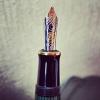
What's Your Favourite Pen/ink Combination For Rubbish Paper?
Tom Traubert posted a topic in Fountain & Dip Pens - First Stop
Hi all. So, despite my insistence at the start of every year that my students produce their work on FP-friendly paper, many of them use some pretty horrific stuff - it's invariably grey, opaque and sponge-like. I will not mark in ballpoint as it cripples my hand, so I've spent ages trying to get...- 33 replies
-

A Glut Of Desk Blotters Going Spare!
Inkysloth posted a topic in Pay It Forward, Loaner Programs & Group Buys
Hi all, My partner's office just had a major clearout, and he's brought home about 20 desk blotters (with blotting paper attached) Anyone who wants one, for the price of postage (about £3.00 but I need to measure & weigh to be sure) is welcome to one - just drop me a PM. They're about 16" x 10...- 37 replies
-
- blotter
- desk blotter
-
(and 1 more)
Tagged with:









